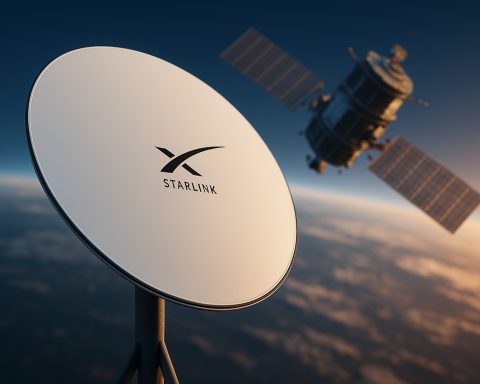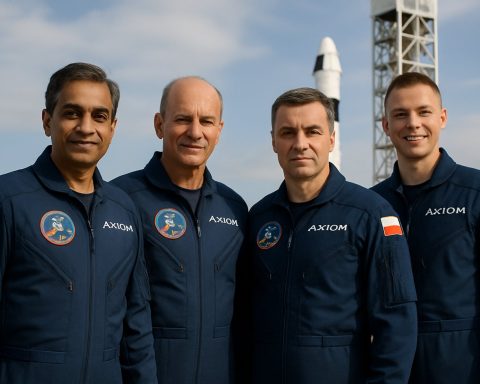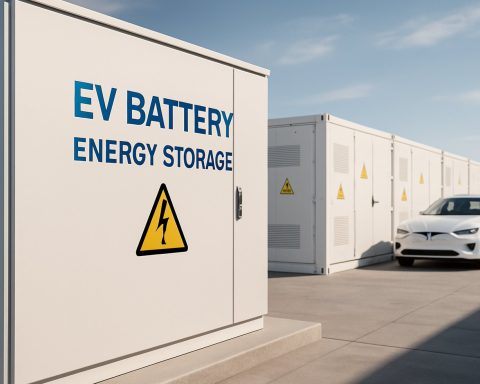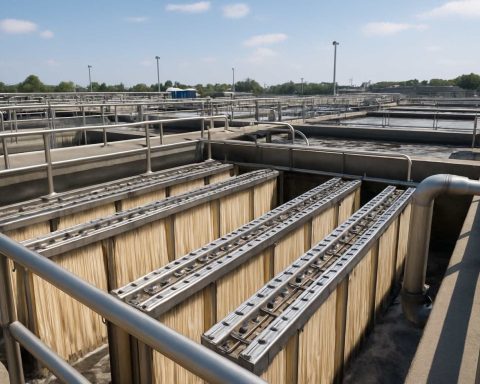- CATL, a leading battery manufacturer, unveiled a groundbreaking battery in Shanghai that can add 323 miles of range with just five minutes of charging.
- The upgraded Shenxing battery boasts a maximum charging speed of 1.3 megawatts, achieving 5% to 80% charge in 15 minutes, even at -10°C.
- The Naxtra battery, a sodium-ion innovation, offers a sustainable alternative to lithium, promising up to 310 miles for electric vehicles.
- CATL introduced a dual-power battery combining fast-charging capabilities with an auxiliary pack for a range of 932 miles on a single charge.
- Geopolitical tensions, particularly US-China trade issues, complicate the technological advancements’ entry into the American market.
- CATL’s innovations mark a significant step towards transforming electric vehicle technology and charging infrastructure.
A revolution in electric vehicle technology emerged from Shanghai, captivating the attention of auto enthusiasts and industry insiders alike. CATL, the world’s leading battery manufacturer, unveiled a pioneering battery capable of adding a whopping 323 miles of range with just five minutes of charging. This breakthrough promises to significantly transform the landscape of electric mobility, making long charging times a relic of the past.
At the epicenter of this innovation is CATL’s upgraded Shenxing battery. This powerhouse achieves a maximum charging speed of 1.3 megawatts, rendering it capable of fueling an EV with enough range to comfortably tackle many commutes in the time it takes to grab a coffee. Even under frigid temperatures of -10 degrees Celsius, the battery shines, accelerating from a mere 5 percent to 80 percent charge in a breezy 15 minutes.
But CATL didn’t stop at fast-charging prowess. They introduced the Naxtra, a sodium-ion battery that embraces a more sustainable approach. Unlike its lithium counterparts, sodium is more abundant and safer, devoid of the volatile risks that sometimes accompany lithium-based cells. Promising up to 500 kilometers (310 miles) for electric vehicles, the Naxtra could redefine how hybrid and EV power systems are conceived.
Adding to the excitement, CATL lifted the veil on a futuristic dual-power battery. This marvel of engineering resembles a dual-engine airplane, harmonizing an ultra-efficient fast-charging cell with an auxiliary pack. The result? A staggering single-charge range of 1,500 kilometers (932 miles), laying the groundwork for ultra-long-distance electric travel without the anxiety of frequent recharging stops.
However, this bright future is dulled by geopolitical shadows. Rising between the promise of electrified roads and reality is a complex web of US-China trade tensions. As geopolitical strategies evolve, with the US restricting trade and China withholding rare earth minerals, the seamless introduction of CATL’s technological wonders to the American market is fraught with uncertainty. The intricate dance of international relations may keep these advancements at bay, at least for now.
Yet, the message is clear. With every innovation, CATL is not just pushing the boundaries of technology; it is setting the stage for an electrical renaissance, one instant charge at a time.
Revolutionary Electric Vehicle Battery Breakthrough: What You Need to Know
Revolutionizing Electric Mobility: CATL’s Game-Changing Battery Technology
CATL has taken a significant leap in the electric vehicle (EV) industry by unveiling a revolutionary battery technology that is turning heads. This breakthrough, which originated in Shanghai, offers groundbreaking improvements in charging speeds and sustainability, marking a new era for electric mobility.
Advanced Battery Technology: Key Features and Capabilities
1. Shenxing Fast-Charging Battery:
– Unprecedented Charging Speed: The Shenxing battery achieves a maximum charging speed of 1.3 megawatts, allowing EVs to gain an additional 323 miles of range in just five minutes.
– Cold Weather Performance: Unlike traditional batteries which struggle in cold environments, this battery can charge from 5% to 80% in just 15 minutes at temperatures as low as -10 degrees Celsius.
2. Naxtra Sodium-Ion Battery:
– Abundant and Safe Materials: Using sodium instead of lithium increases safety and availability since sodium is more abundant and less volatile.
– Sustainable Energy: Promises driving ranges up to 500 kilometers (310 miles), potentially reshaping hybrid and EV power systems with an eco-friendly focus.
3. Dual-Power Battery Concept:
– Remarkable Range: Boasting a combined single-charge range of 1,500 kilometers (932 miles), it could revolutionize long-distance travel, effectively reducing “range anxiety.”
Real-World Applications and Future Implications
– EV Adoption: These innovations set the stage for broader EV adoption by alleviating common concerns such as long charging times and limited range.
– Sustainability: By embracing sodium-ion technology, CATL aligns with global sustainability goals, potentially decreasing the industry’s reliance on scarce resources.
– Market Competition: This breakthrough sets a high bar for competitors, pushing the industry towards more sustainable and efficient solutions.
Industry Trends and Geopolitical Challenges
While the technology is promising, it does not exist in a vacuum. The current geopolitical climate, particularly US-China trade tensions, introduces complexities in adopting these advancements globally. Restrictions on trade and materials could hinder the global rollout of CATL’s technologies.
Projections and Actionable Recommendations
– Market Adaptation: Automakers need to prepare to integrate these new battery technologies into upcoming vehicle models to gain a competitive edge.
– Strategic Partnerships: Companies should explore partnerships to circumvent geopolitical hurdles, ensuring availability across different markets.
– Infrastructure Investment: Governments and private investors need to invest in charging infrastructure that supports high-speed charging to maximize the potential of these batteries.
Quick Tips for Consumers
– Stay Informed: Keep abreast of the latest developments in battery technologies for EVs to make informed purchasing decisions.
– Evaluate Charging Options: Consider the availability of fast-charging infrastructure in your area to fully benefit from the technology.
– Consider Environmental Impact: Opt for EVs with sustainable battery options like sodium-ion if reducing environmental impact is a priority.
Conclusion
CATL’s groundbreaking developments in battery technology herald a new era for electric vehicles, characterized by rapid charging, extended range, and sustainable materials. While challenges remain, especially in international markets, the future of EVs looks promising with these technological strides.
For more insights into technological innovations and sustainable practices, visit CATL for further updates and breakthroughs.











